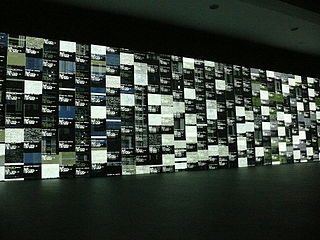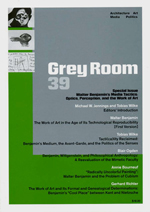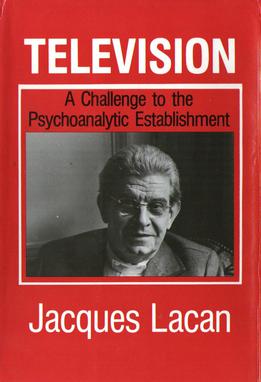Postmodernism is an intellectual stance or mode of discourse characterized by skepticism toward the "grand narratives" of modernism; rejection of epistemic certainty or the stability of meaning; and sensitivity to the role of ideology in maintaining political power. Claims to objectivity are dismissed as naïve realism, with attention drawn to the conditional nature of knowledge claims within particular historical, political, and cultural discourses. The postmodern outlook is characterized by self-referentiality, epistemological relativism, moral relativism, pluralism, irony, irreverence, and eclecticism; it rejects the "universal validity" of binary oppositions, stable identity, hierarchy, and categorization.

In the arts and in literature, the term avant-garde identifies a genre of art, an experimental work of art, and the experimental artist who created the work of art, which usually is aesthetically innovative, whilst initially being ideologically unacceptable to the artistic establishment of the time. The military metaphor of an advance guard identifies the artists and writers whose innovations in style, form, and subject-matter challenge the artistic and aesthetic validity of the established forms of art and the literary traditions of their time; thus how the artists who created the anti-novel and Surrealism were ahead of their times.
Noise music is a genre of music that is characterised by the expressive use of noise within a musical context. This type of music tends to challenge the distinction that is made in conventional musical practices between musical and non-musical sound. Noise music includes a wide range of musical styles and sound-based creative practices that feature noise as a primary aspect.

Postmodern art is a body of art movements that sought to contradict some aspects of modernism or some aspects that emerged or developed in its aftermath. In general, movements such as intermedia, installation art, conceptual art and multimedia, particularly involving video are described as postmodern.
Visual culture is the aspect of culture expressed in visual images. Many academic fields study this subject, including cultural studies, art history, critical theory, philosophy, media studies, Deaf Studies, and anthropology.

Harold Foss "Hal" Foster is an American art critic and historian. He was educated at Princeton University, Columbia University, and the City University of New York. He taught at Cornell University from 1991 to 1997 and has been on the faculty at Princeton since 1997. In 1998 he received a Guggenheim Fellowship.
Rosalind Epstein Krauss is an American art critic, art theorist and a professor at Columbia University in New York City. Krauss is known for her scholarship in 20th-century painting, sculpture and photography. As a critic and theorist she has published steadily since 1965 in Artforum,Art International and Art in America. She was associate editor of Artforum from 1971 to 1974 and has been editor of October, a journal of contemporary arts criticism and theory that she co-founded in 1976.
Benjamin Heinz-Dieter Buchloh is a German art historian. Between 2005 and 2021 he was the Andrew W. Mellon Professor of Modern Art in the History of Art and Architecture department at Harvard University.
Yve-Alain Bois is a professor of Art History at the School of Historical Studies at the Institute for Advanced Study in Princeton, New Jersey.

Craig Owens (1950–1990) was an American post-modernist art critic, gay activist and feminist.

Le bonheur de vivre is a painting by Henri Matisse. Along with Picasso's Les Demoiselles d'Avignon, Le bonheur de vivre is regarded as one of the pillars of early modernism. The monumental canvas was first exhibited at the Salon des Indépendants of 1906, where its cadmium colors and spatial distortions caused a public expression of protest and outrage.
In the visual arts, late modernism encompasses the overall production of most recent art made between the aftermath of World War II and the early years of the 21st century. The terminology often points to similarities between late modernism and post-modernism although there are differences. The predominant term for art produced since the 1950s is contemporary art. Not all art labelled as contemporary art is modernist or post-modern, and the broader term encompasses both artists who continue to work in modern and late modernist traditions, as well as artists who reject modernism for post-modernism or other reasons. Arthur Danto argues explicitly in After the End of Art that contemporaneity was the broader term, and that postmodern objects represent a subsector of the contemporary movement which replaced modernity and modernism, while other notable critics: Hilton Kramer, Robert C. Morgan, Kirk Varnedoe, Jean-François Lyotard and others have argued that postmodern objects are at best relative to modernist works.

The Painted Word is a 1975 book of art criticism by Tom Wolfe.

Grey Room is a peer-reviewed academic journal published quarterly, in print and online, by the MIT Press. Founded in 2000, it includes work in the fields of architecture, art, media, and politics. To date it has featured contributions by such prominent historians and theorists as Yve-Alain Bois, Judith Butler, Georges Canguilhem, Hubert Damisch, Friedrich Kittler, Chantal Mouffe, Antonio Negri, Paolo Virno, Paul Virilio, and Samuel Weber.
John Douglas Crimp was an American art historian, critic, curator, and AIDS activist. He was known for his scholarly contributions to the fields of postmodern theories and art, institutional critique, dance, film, queer theory, and feminist theory. His writings are marked by a conviction to merge the often disjunctive worlds of politics, art, and academia. From 1977 to 1990, he was the managing editor of the journal October. Before his death, Crimp was Fanny Knapp Allen Professor of Art History and professor of Visual and Cultural Studies at the University of Rochester.

Television: A Challenge to the Psychoanalytic Establishment is the 1990 English-language translation of Jacques Lacan's text "Télévision" accompanied by a "Dossier on the Institutional Debate". The single volume thus includes two distinct projects which were separately translated.
Annette Michelson was an American art and film critic and writer. Her work contributed to the fields of cinema studies and the avant-garde in visual culture.
Gabriel (1976) is the only film by the Canadian-American painter Agnes Martin. It is 78 minutes in length, and features a little boy going for a walk in a natural landscape.
David Humphrey is an American painter, art critic, and sculptor associated with the postmodern turn in painting that began in the late 1970s. He is best known for his playful, cartoonish, puzzling paintings, which blend figuration and abstraction and create "allegories" about the medium of painting itself. Humphrey holds a BFA from Maryland Institute College of Art (1977) and a MA from New York University (1980), where he studied with film critic Annette Michelson; he also attended the New York Studio School from 1996 – 1997. He has been the recipient of many awards including the Guggenheim Fellowship in 2002, the Rome Prize in 2008, and the American Academy of Arts and Letters Purchase Award in 2011. He was born in Augsburg Germany and raised in Pittsburgh Pennsylvania. He lives and works in New York City.
Modernist film is related to the art and philosophy of modernism.








